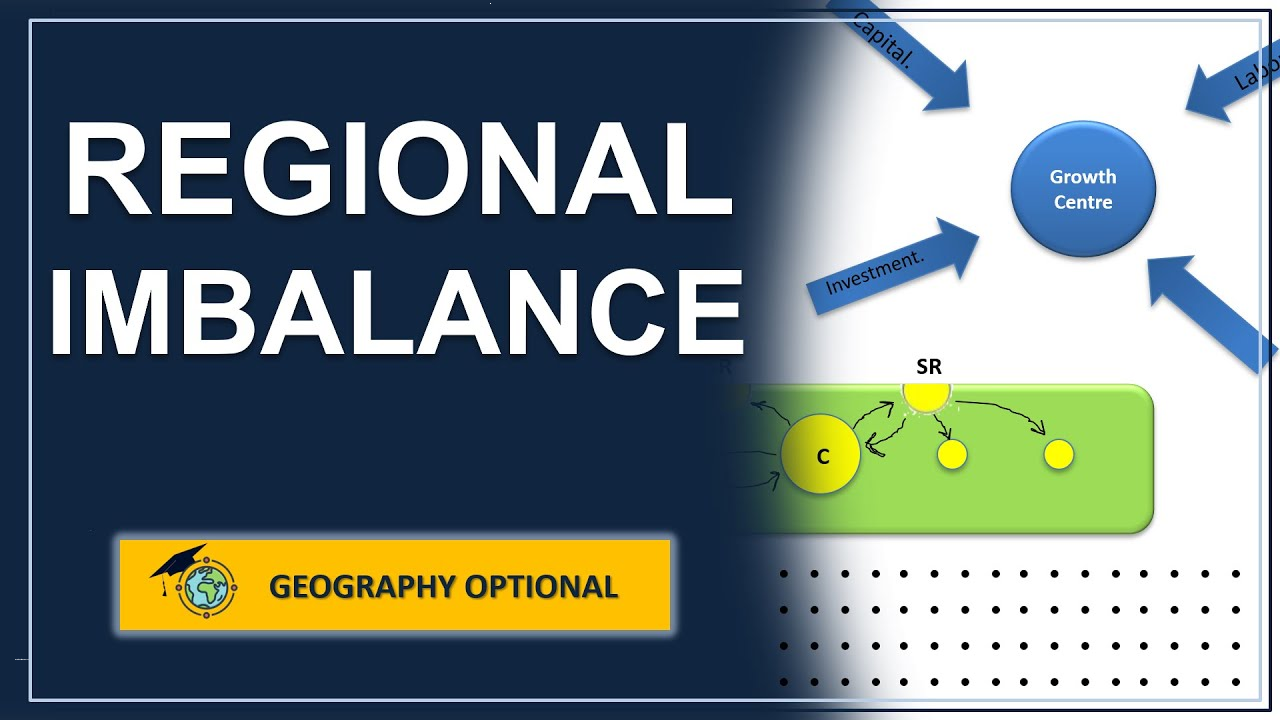Regional Imbalances
Regional imbalances refer to the uneven distribution of economic activity, resources, and development across different regions. Regional imbalances can arise due to a variety of factors, such as geography, natural resources, infrastructure, and policies.
Meaning of Regional Imbalances
Regional imbalances refer to the uneven distribution of economic activity, resources, and development across different regions. These imbalances can result in disparities in income, employment, education, health, and quality of life. Regional imbalances can arise due to a variety of factors, such as geography, natural resources, infrastructure, and policies.
History of Regional Imbalances
Regional imbalances have been a concern for policymakers and planners for many years. The concept of regional disparities was first introduced in the 1950s and 1960s, when economists and planners began to recognize the uneven distribution of economic activity and development across different regions. Since then, regional imbalances have been a focus of regional planning and development strategies.
Types of Regional Imbalances
There are several types of regional imbalances, including:
- Urban-Rural Imbalances: Urban-rural imbalances refer to the uneven distribution of economic activity and development between urban and rural areas. This can lead to disparities in income, employment, education, and quality of life.
- Inter-Regional Imbalances: Inter-regional imbalances refer to the uneven distribution of economic activity and development across different regions within a country. This can lead to disparities in income, employment, education, and quality of life.
- Intra-Regional Imbalances: Intra-regional imbalances refer to the uneven distribution of economic activity and development within a particular region. This can lead to disparities in income, employment, education, and quality of life.
Examples of Regional Imbalances
Here are some examples of regional imbalances:
- The North-South Divide in Italy: The North-South divide in Italy refers to the uneven distribution of economic activity and development between the northern and southern regions of Italy. The northern regions are more developed and prosperous, while the southern regions are more economically disadvantaged.
- The East-West Divide in Germany: The East-West divide in Germany refers to the uneven distribution of economic activity and development between the eastern and western regions of Germany. The eastern regions are less developed and prosperous, while the western regions are more economically advanced.
- The Urban-Rural Divide in India: The urban-rural divide in India refers to the uneven distribution of economic activity and development between urban and rural areas. Urban areas are more developed and prosperous, while rural areas are more economically disadvantaged.
Issues with Regional Imbalances
Despite their potential benefits, regional imbalances can also face several issues, including:
- Unequal Development: Regional imbalances can lead to unequal development and concentration of economic activity in certain areas, leading to regional disparities and inequality.
- Environmental Issues: Regional imbalances can lead to environmental issues, such as pollution and resource depletion, particularly in areas with high concentrations of economic activity.
- Infrastructure Challenges: Regional imbalances can put pressure on infrastructure, such as transportation networks and utilities, leading to congestion and service disruptions.
- Political Issues: Regional imbalances can be influenced by political factors, such as power struggles and interests of different groups, leading to unequal distribution of resources and development.


